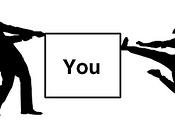Paradigms of Neoclassical
And Poltical Economy
In our society today, there are great disparities between different groups of people. The gaps exist between those in every segment of the world, from those of different religions or nationalities, those of rich or poor families, to those who may or may not be educated. The ways in which economics and societies intermingle dictates virtually every part of our lives, from what we wear and eat, to what we do and think. To explain these phenomena, there are two main theories: Neoclassical, and Political Economy.
The Neoclassical approach is based on how goods and services are exchanged, and that relationship with supply and demand. Neoclassicism defines a successful market as one with many buyers and sellers, thereby creating competition. The idea being that with sufficient competition the economy will be controlled by market forces, which in turn will disallow corporations or individuals from influencing it.
This model does, however, rely on a number of inconsistent variables. For instance, one of the assumptions made by Neoclassicists is that economic actions are undertaken by rational individuals using all available information to maximize their personal utility. This model is also largely based on "laissez faire" philosophy, which is effected by adjustments or manipulations of economies by governments or other external factors. It holds that such intervention is inefficient, and thus disrupts the economy in such a way as to raise prices for individuals, thus lowering their utility.
This model also illustrates a classic split between the rich and poor, as some of its assumptions rely on the law of demand, substitute goods, and equilibrium. These are concepts which make sense in theory, but in terms of direct application to the economy and the actions of consumers, are slightly abstract. With the law of demand,


